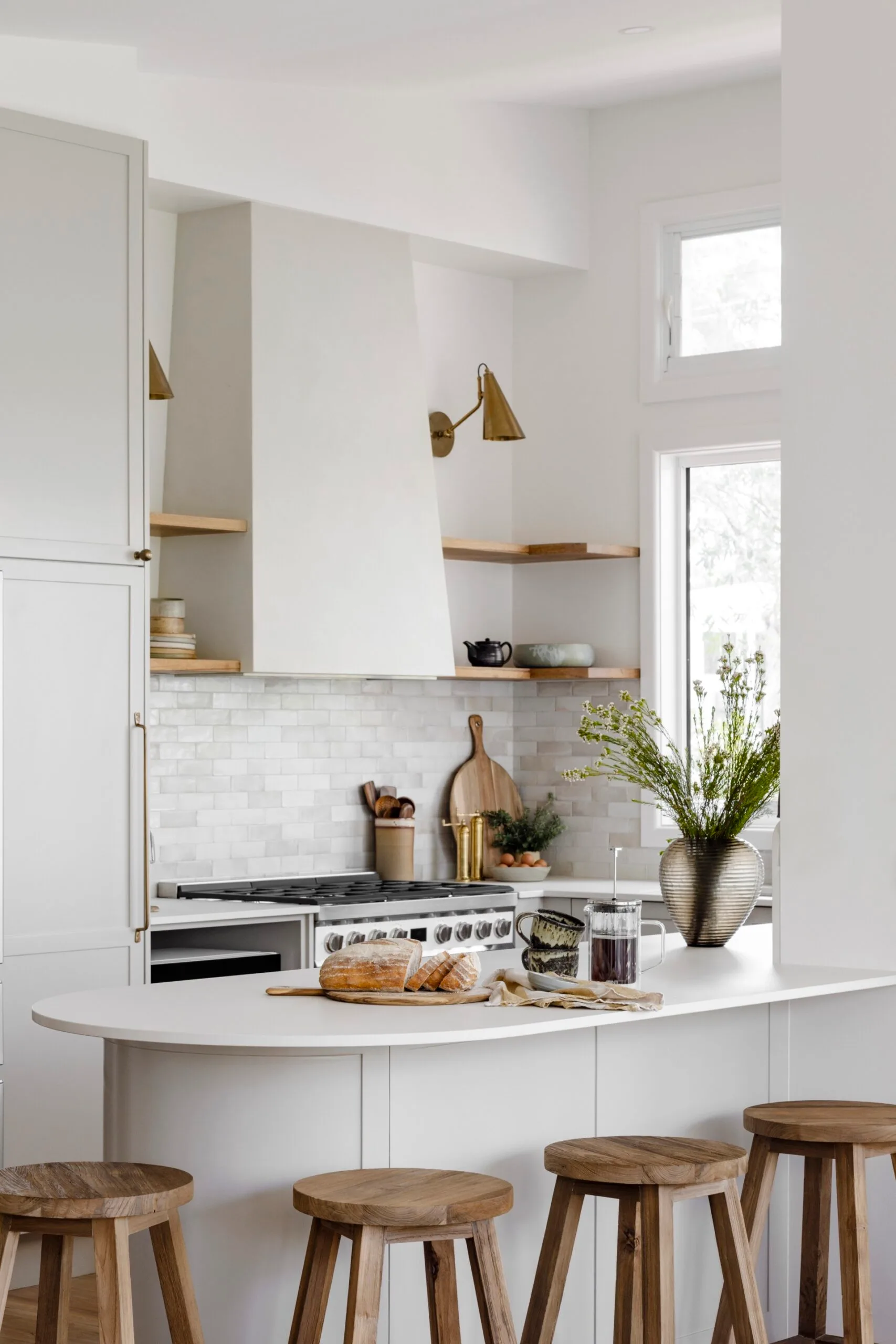The kitchen splashback has come into its own in the 21st Century. Once merely a functional work surface to protect the walls from splashes and spills, it has long been recognised for its potential to stamp a homeowner’s personal style in the kitchen.
With the variety of popular choices for splashback tiles including ceramic, porcelain, glass and stone, the ideal blend of wipe-down and wow factor is within reach on any budget.
We explore some of the best kitchen splashback tiles for durability, ease of maintenance and myriad design options and asked the experts for their tips on how to transform your kitchen into a showpiece.
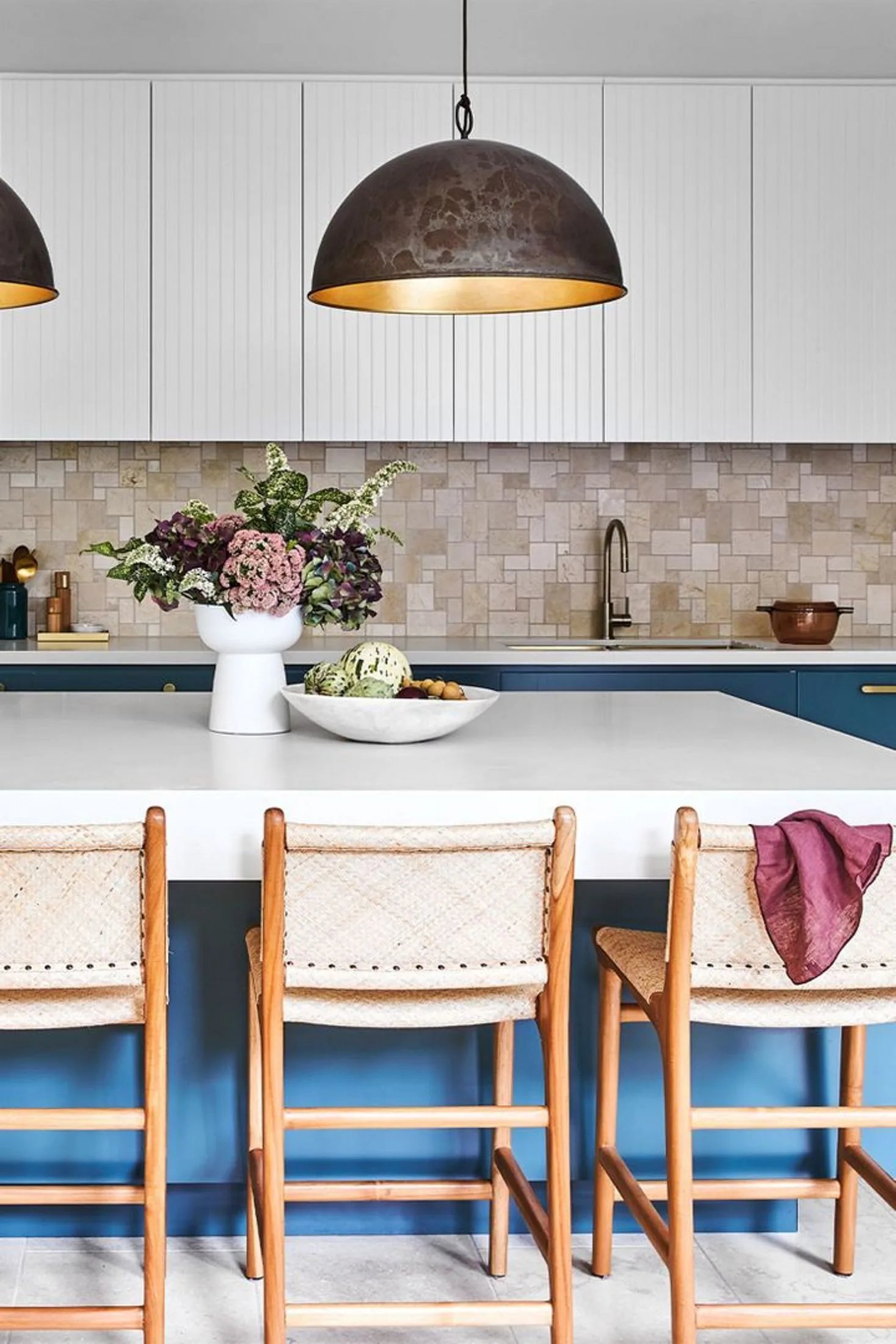
What tiles are best for a kitchen splashback?
“Splashbacks are a great opportunity to experiment with different colours and patterns to create a focal point that’s a bit fun and reflects your style and personality,” says Michelle Kearney, National Clearance Manager & Product Communication Specialist at Beaumont Tiles. As splashback tiles are just one part of a larger decorating scheme, it’s important to create a cohesive look, as well as consider usability and maintenance. “Personal choice should always play a part,” says Michelle. “If you love a particular colour or shade always consider how it will work with your other elements like stone benchtops and cabinet colours. Also consider other factors like lighting, as a darker splashback feature can be quite impactful but could also make the space feel smaller overall.”
“It is worth considering the overall proportions, textures and colours within the rest of the kitchen,” advises Jen Humphry, Director and Owner of architecture and design firm Modify. “What you are wanting to achieve overall aesthetically, do you want to highlight the splashback? Do you want it to recede into the background?”

What is the most practical kitchen splashback?
The old adage of “measure twice, order once”, rings true when choosing splashbacks for kitchens. “The scale of the area being tiled and the size of the tile need to be considered so that they are in proportion with each other,” says Jen. “If the area is not very large, it might be better suited to have a smaller mosaic. And if the area is quite wide and tall, then a small mosaic might be too busy and so a larger tile format might work best.”
Michelle agrees. “Always allow for wastage, especially with mosaics and or slabs. If you are going to work with a detailed laying pattern such as brick bond or herringbone, dry lay your tiles first and measure the total space to ensure the full pattern will fit across the space without unnecessary cuts.”
“If you are wanting to use a larger format tile, it’s best to find the right sized tile to put in place without creating cuts in the tiles and grout lines,” says Michelle. “If you have windows to work around, using a subway tile or a smaller mosaic tile will be more effective to cut around and install, while also adding a nice feature around the window.”
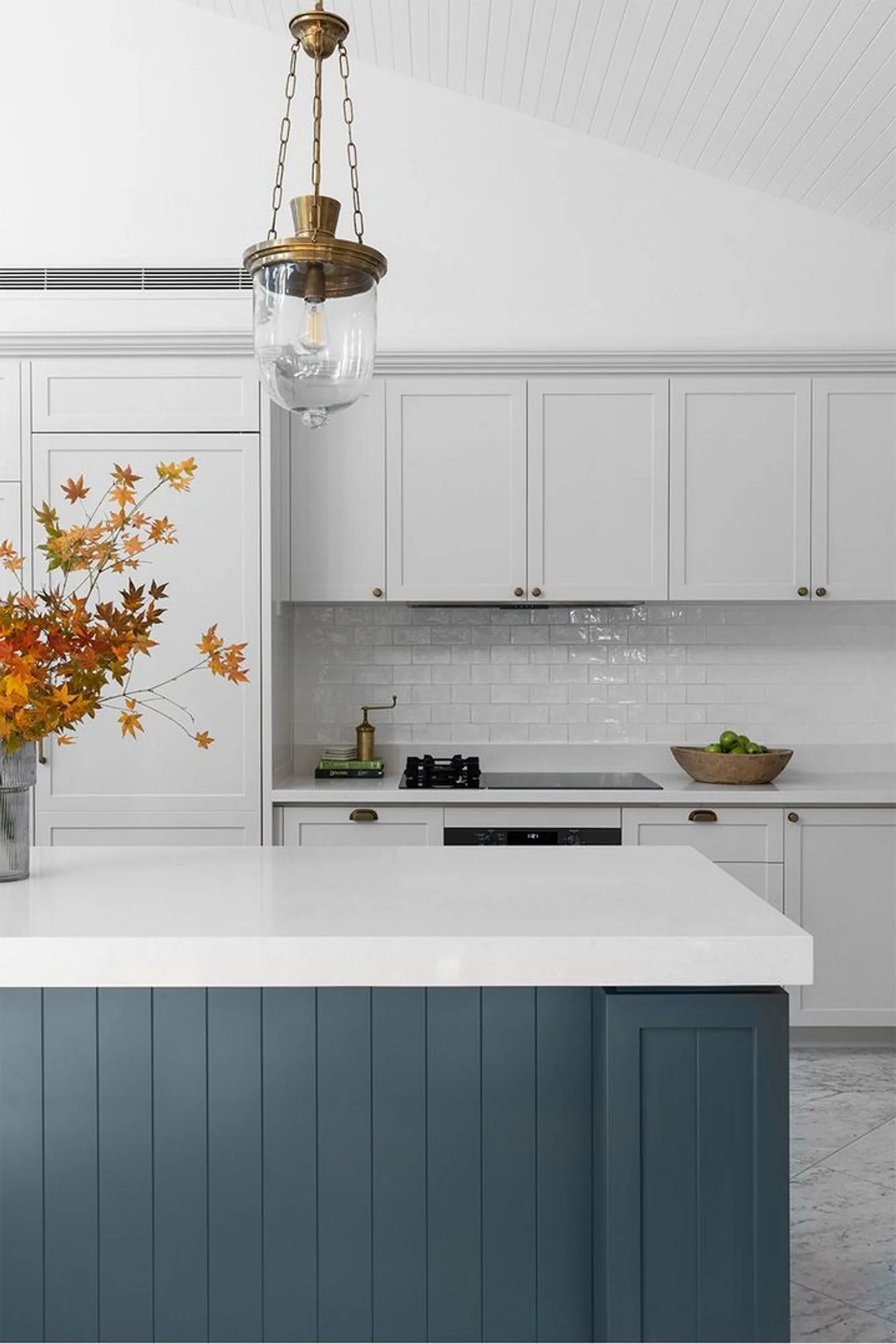
1. Subway tiles
One of the most popular kitchen splashback tiles is the classic subway tile and they’re hard to go past for a moisture-resistant, hygienic and easy-to-clean surface. Used for over a century, subway tiles remain timeless in design and sheer versatility. Depending on the material they’re made from, subway tiles are economical and come in a variety of sizes and colours, making them easy to incorporate into any kitchen design – going for a marble subway tile or using coloured grout is a clever way to reflect a current design trend.
2. Mosaic tiles
Often seen in bathroom design, another popular splashback tile choice is the mosaic tile, which comes in a range of materials, including glass, ceramic, and stone. Mosaic tiles are often used to create intricate designs or add a pop of colour to the kitchen that is also very durable and easy to clean. They can be a bit more expensive than subway tiles, but the unique designs they offer make them worth the investment.

3. Large format tiles
Commonly chosen for kitchen splashbacks and available in a wide range of styles and sizes, from a look of grand, luxurious marble to a modern concrete look, are larger-format tiles like porcelain, says Michelle. “We love this grout-less look, not only seamless but also super easy to keep clean with no grout lines to worry about. Being engineered tiles they are non-porous, so perfect for a messy kitchen,” says Michelle. Installation needs a professional, however. “It can be a little tricky to put them in a tight space, so always ask a great tiler before you start, and ensure they have experience in large format tile laying,” Michelle advises.

How to choose the colour of your splashback tiles
“If you are unsure of bold colours, go with a neutral tone and jazz it up with a herringbone or brick bond laying pattern, creating a textured appeal without the pop of colour,” says Michelle, adding that a basic tile choice needn’t be boring once laid. “Get creative with your imagination and look at various different laying styles that you can incorporate like herringbone, double herringbone, basket weave or brick bond!”
“If the kitchen joinery panels are in a timber veneer finish, then it might be more ideal to pare it all back and select a stone tile that matches the stone bench,” suggests Jen. “Alternatively, if the joinery is predominantly plain and a single colour, then a more textured or smaller-scaled tile might add some interest and texture within the space.”
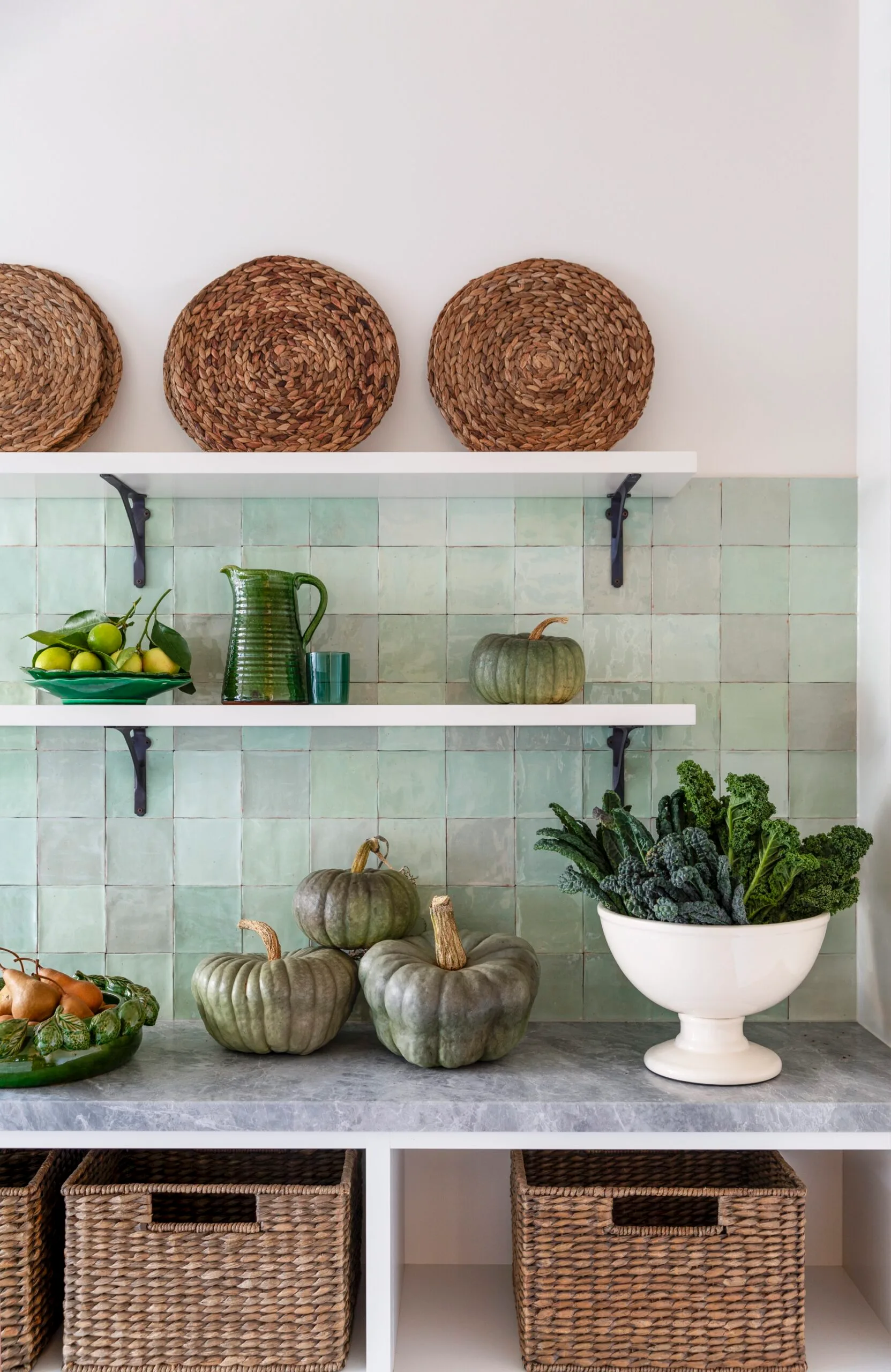
Kitchen splashback trends
Interior design trends come and go faster than is ideal to change fixed materials in the kitchen, so think outside the box when looking at the design of your tile splashback so the style you choose will endure. “Layering different finishes could be interesting,” says Jen. “For example having part of the splashback as the stone benchtop wrapping up to a certain height and then mosaic tiling above. Or a more pared-back monochromatic approach where the colour of the tile selection matches the benchtop and cabinetry, to create a soft and subtle palette.”
4. Natural stone tiles
Making a splash in kitchens right now, stone tiles including marble, granite, and limestone are a luxurious option to add texture and depth to your kitchen design. They are available in a wide range of shapes and sizes, including in mosaic sheets for easy installation, however, do require some maintenance to keep them looking their best. It’s important they are properly sealed as stone is naturally porous, warns Jen. “Ensure the grout lines are not too thick as they could hold dirt and stains, particularly at a cooktop bench where spills are more prone,” says Jen. “Something else to consider is the finish of the tile, as a rough matte finish might be difficult to clean.” Stone tiles also tend to be more expensive than other tile options but offer a timeless beauty that is hard to match and for many people, this unique character makes them a worthwhile investment.
5. Engineered marble and stone
For the look of stone without the maintenance, consider opting for an engineered marble or stone tile for your splashback which, says Michelle are, a huge hit because you can get the look without the maintenance.
6. Glass splashback tiles
For those who want a sleek, modern look, glass tiles are an excellent choice. Glass tiles are available in various colours and sizes and can be used to create a bold statement or a subtle accent. They reflect light, making the kitchen appear brighter and more spacious. Though prone to showing up dirt and splash marks, glass tiles are also easy to clean and maintain and can be used to create a contemporary look that will last for years.

What is a cheap, effective splashback tile?
Affordable kitchen splashback tiles can be found in a variety of materials and designs. Ceramic tiles are a popular option for those on a budget. They are available in a variety of colours and sizes, and they are easy to install. Ceramic tiles are also very durable and easy to clean, making them a practical choice for a busy kitchen. “Some creative ways of incorporating different types of tiles into a kitchen splashback design could be by simply having fun with the grout colour in contrast to the tile selection,” suggests Jen.
Another affordable option is porcelain tiles. Porcelain tiles are similar to ceramic tiles but are denser and more durable. They are available in a variety of colours and sizes and can be used to create a classic or contemporary look. They must be installed by a professional, however. “Having a good tiler on board who knows how to install that particular tile is important and who appreciates attention to detail,” warns Jen.
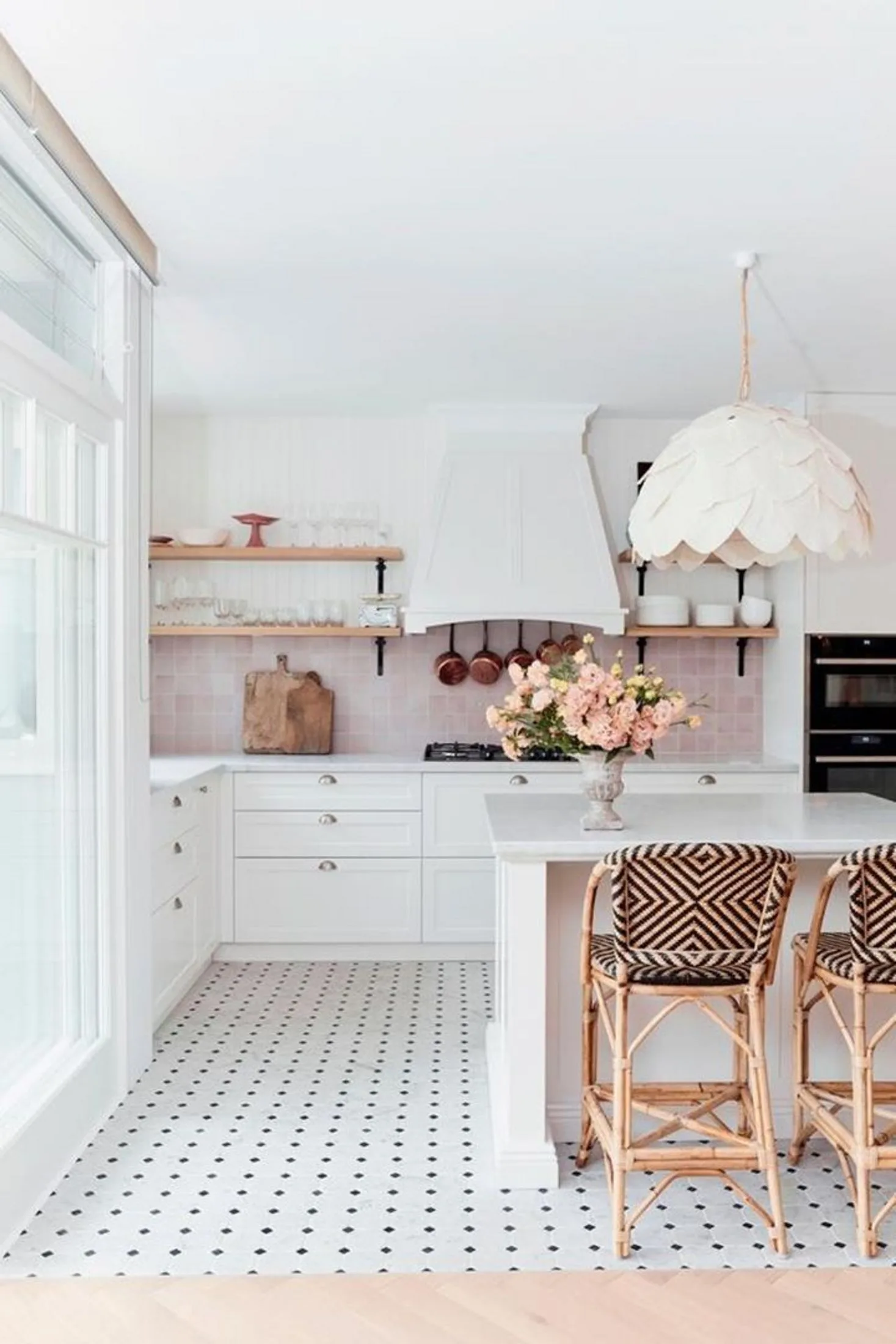
Creative kitchen splashback ideas
Choosing the right kitchen splashback tile can transform your kitchen into a stunning and practical space. Whichever option you choose, a splashback tile can make a big impact on the overall look and feel of your kitchen.
“Don’t underestimate the impact a great splashback can make in your kitchen,” says Michelle. “Be brave, you’ll love it.”
